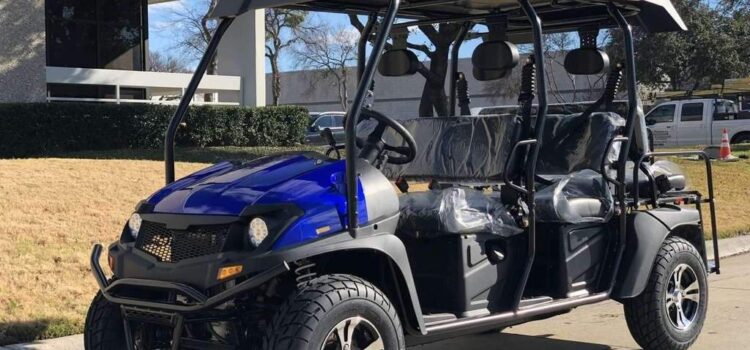At the January 13 Blue Ash City Council Meeting, the Council heard the first reading of an ordinance that would allow Low Speed Vehicles on City streets. Council members supporting the move, chose to advance a version that would allow these vehicles on any roads permitted by state law. A more restrictive version that confined the vehicles to roads with speed limits of 25 mph or less was dropped. Final action could be taken at the February 10 City Council meeting.
Low Speed Vehicles are a class of vehicle created by the National Highway Traffic Safety Administration and designed for use “within planned, limited environments such as retirement and gated communities.1” Since this class was created, most states have enacted legislation that provides a way for them to be used on local streets in normal traffic. In Ohio, individual cities must approve their use before they are allowed on public streets.
By definition, Low Speed Vehicles have a maximum speed of between 20 and 25 mph and must have a minimum set of safety equipment including passenger seatbelts, break lights, and turn signals. Despite these requirements, the Insurance Institute for Highway Safety (IIHS), has come out to say that they should not be on busy public roads with regular traffic.
By allowing LSVs and minitrucks on more and more kinds of roads, states are carving out exceptions to 40 years of auto safety regulations that save lives,” says David Zuby, the Institute’s chief research officer. “It’s a troubling trend that flies in the face of the work insurers, automakers, and the federal government have done to reduce crash risk.”
https://www.iihs.org/news/detail/low-speed-vehicles-and-minitrucks-shouldnt-share-busy-public-roads-with-regular-traffic
According to this article from Pew Trusts, Jessica Cicchino, a vice president at the highway safety institute, which doesn’t think LSVs and golf carts should be permitted on roads with cars, especially roads with speed limits above 25 mph, said said her group did a crash test in 2010 between an LSV and a Smart car. The driver in the LSV would have suffered serious or fatal injuries, she said.
This article in the Journal of Transportation and Land Use by K. M. Hunter-Zaworski and Oregon State University points out that it is not only the crashworthiness of LSVs that are of concern. When these vehicles travel in traffic that is going faster than they are, interferes with uniform traffic flow, lowers the capacity of a road, and negatively impacts overall safety. They conclude that these vehicles should be restricted from operating on streets with speed limits above 25 mph, should only be allowed to cross higher speed roads at intersections with four way stops or traffic signals, and that “Local transportation authorities should develop parallel or secondary low-speed roadway networks that connect residential neighborhoods with major activity centers.”
If this ordinance is passed I don’t expect our roads to be flooded with these vehicles and wouldn’t expect there to be a significant number of injuries. However, many of our streets have significant traffic including a number of large trucks. Blue Ash is not the kind of planned, limited environment these vehicles were designed for.

